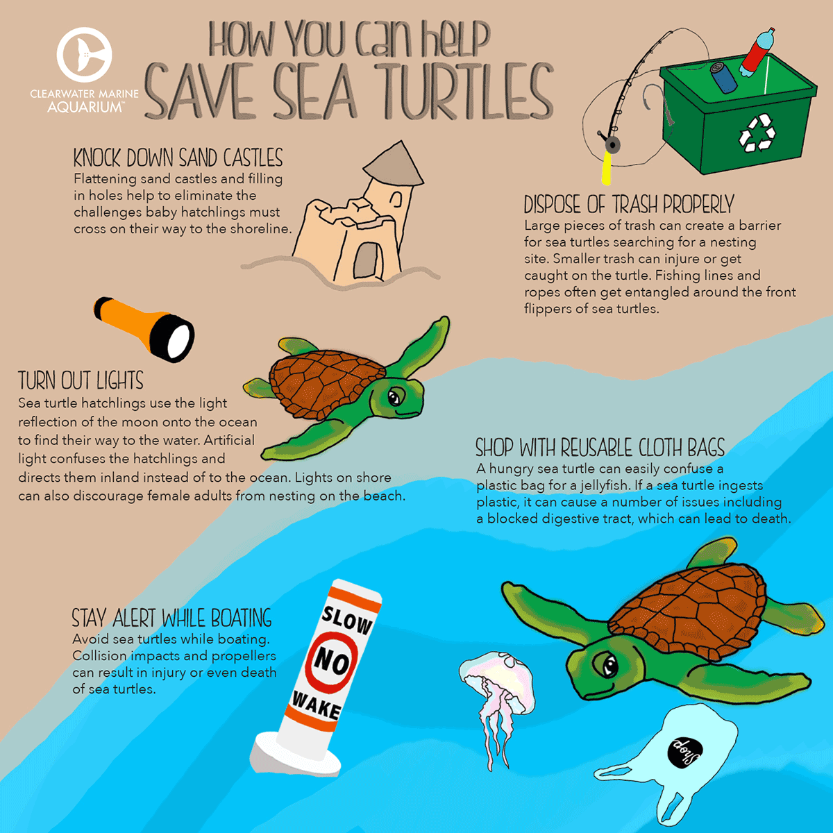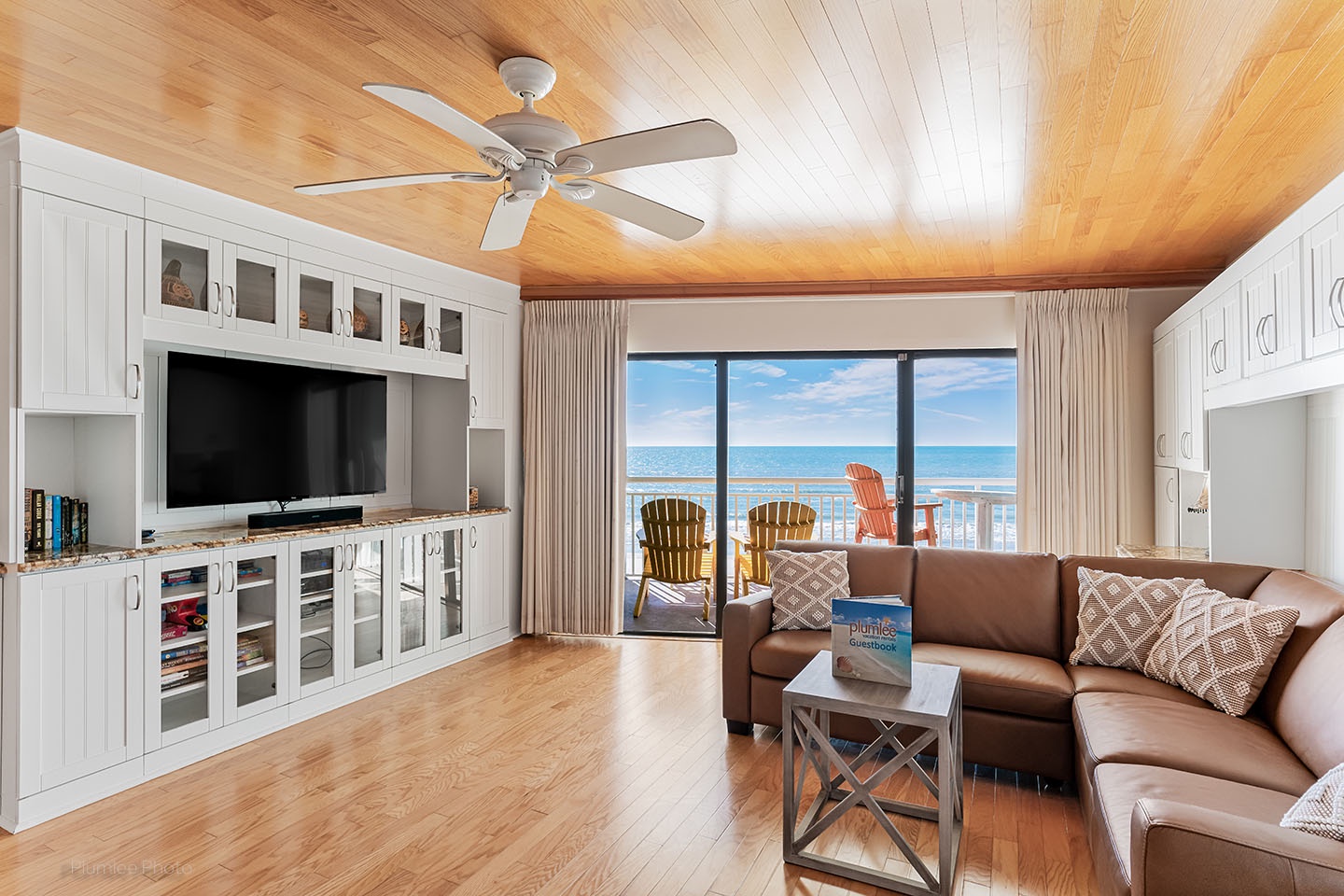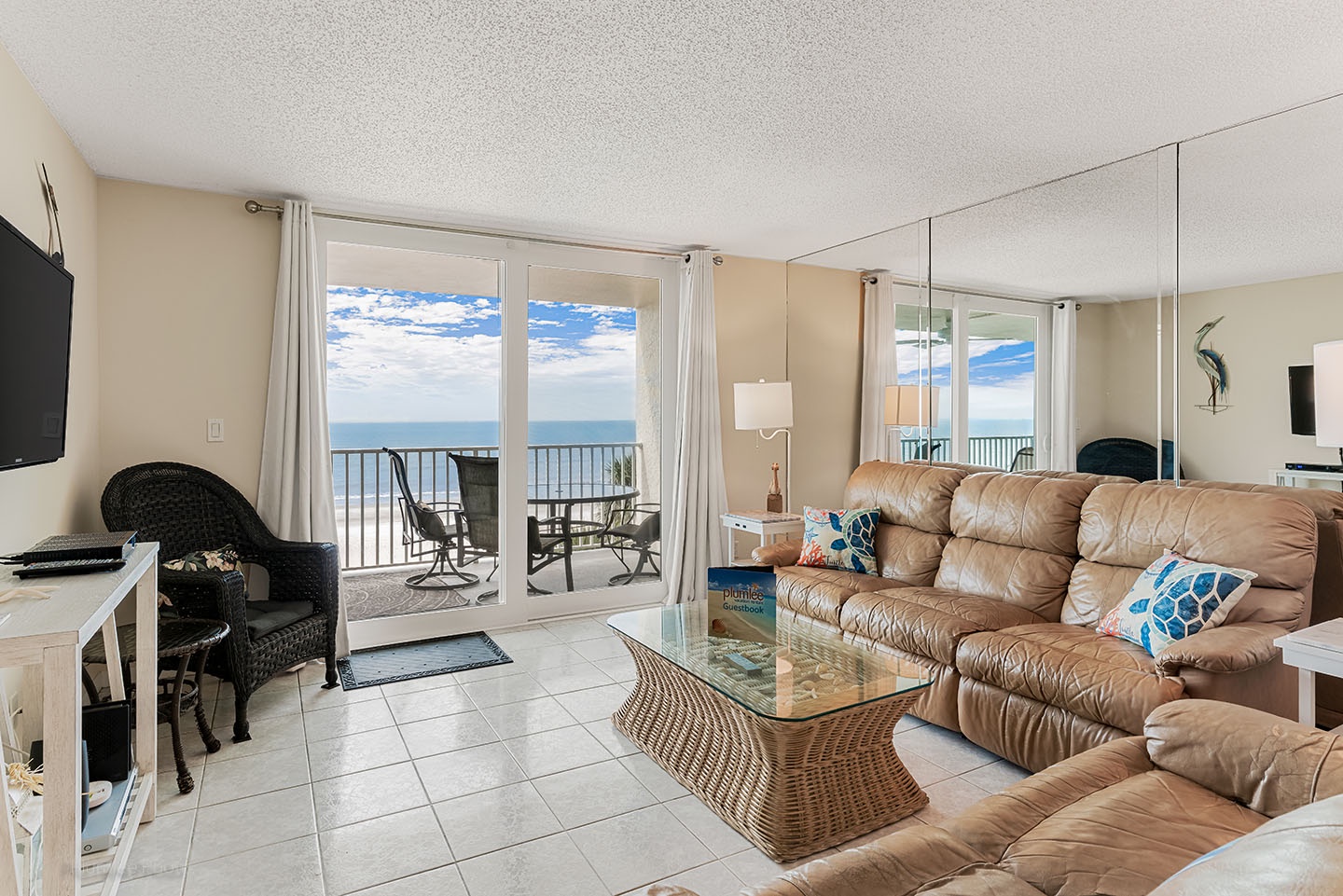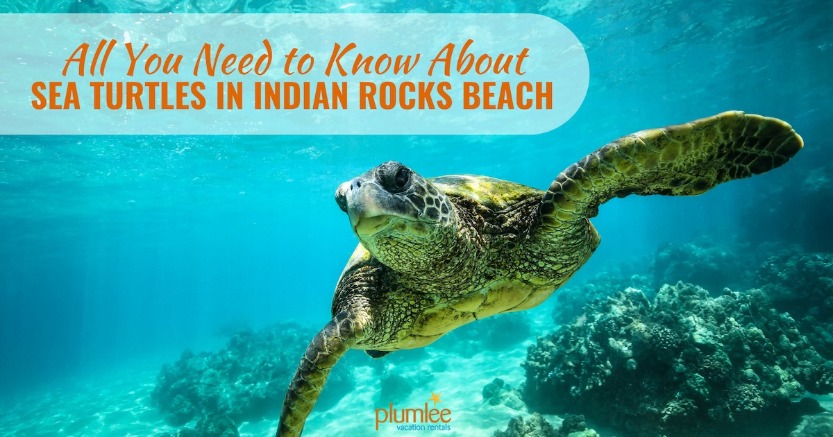
It’s sea turtle nesting and hatching season in Indian Rocks Beach, Indian Shores, and all along the Gulf Coast of Florida. Primarily, we play host to loggerheads nesting on our beaches this time of year, but on rare occasions have encountered Kemp’s ridleys or green sea turtles. So what does all of this mean for you during your Florida beach vacation? Let’s find out. Here’s what you need to know and what you can do to help right at your Indian Rocks Beach rental.
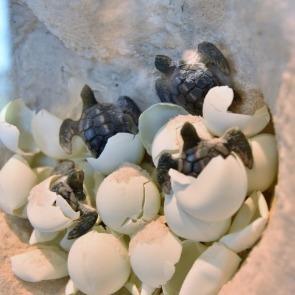
Sea Turtle Nesting & Hatching Season in Florida
May 1 through October 31 is sea turtle nesting and hatching season annually on the Gulf Coast. This means that you may see marked sea turtle nests, stumble upon a clutch of sea turtle eggs—or if you’re lucky, see a female sea turtle in the process of nesting in the earlier summer months or sea turtle hatchlings pipping out of their eggs and scrambling toward the Gulf of Mexico waters in the later summer months. By keeping your distance and letting nature take its course, you’re actually helping. It’s always best to observe with minimal intrusion or disruption.
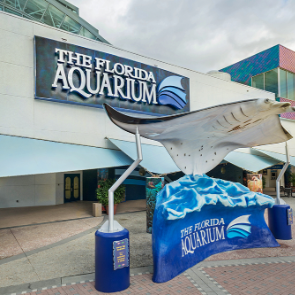
Where to Learn More About Sea Turtles on the Gulf Coast
We have a lot of local resources to help you see and learn more about the sea turtles that grace our Gulf of Mexico shoreline. Check them out during your Indian Rocks Beach vacation.
- Visit the Clearwater Marine Aquarium (CMA)
- Visit the Florida Aquarium in Tampa
- Online at the Florida Fish and Wildlife Conservation Commission
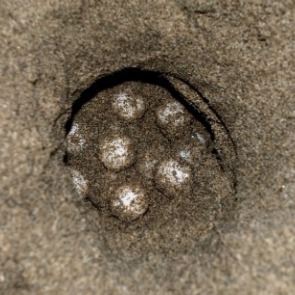
What to Do if You Find a Sea Turtle Nest on the Beach
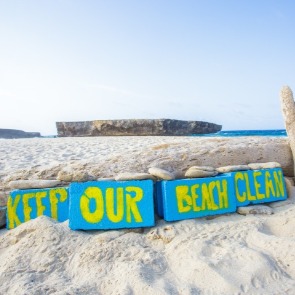
How You Can Help at Your Indian Rocks Beach Rental
If you’re staying in a gulf-front beach vacation rental, turn out unnecessary beach lights to help prevent disorientation of female sea turtles and hatchlings. Close your curtains and be mindful of bright lights shining on the beach. Keep it dark!
If you must use lights near nesting beaches, use amber or red lightbulbs that have long-wavelength light (570 nanometers or longer). Cover or shield light fixtures and keep them directed down and low to the ground whenever possible.
Under natural conditions, hatchlings and adults use brightness to guide them to the water from the beach. The reflection of the moon and stars over the water usually creates the brightest horizon, but on developed beaches, lots of artificial light (street lights, exterior/interior lights on homes, decorative lighting, etc.) confuse the turtle and cause them to think that those sources of light are where the water is. They crawl toward that light wasting precious energy they need to reach the ocean. For nesting females, artificial lights can deter them from emerging onto a beach at all, forcing them to select less optimal nesting sites to deposit their clutch.
What Else Can You Do to Help
Save Florida’s Sea Turtles?
A lot! Here are some of our top tips for what you can do to help the local sea turtle population in Indian Rocks Beach, Indian Shores and beyond. Take some time to share this information with your family, friends and any other guests who’ll be joining you on your Florida Gulf Coast vacation. Knowledge is power, as they say.
Watch this short video from the Clearwater Marine Aquarium for some simple things you can do that make a big difference. You’ll become a hatchling hero!
Read up on these additional sea turtle season tips we’ve included below. Also check out the infographic from the Clearwater Marine Aquarium at the bottom of this post. It’s a great visual to share with your kids.
2. Avoid going to the beach at night. If you must be on the beach at night, limit your walking and do not use flashlights or flash photography. The light may cause the female to abort the nesting process, or other sea turtles nearby may be discouraged from nesting if there are lights on the beach. Many coastal counties and cities have lighting ordinances that help reduce beachfront lighting.
3. Cover up any holes you encounter or create in the sand on the beach. These can be obstacles for sea turtles. They have enough adversity, so let’s minimize their chances of getting stuck or injured by falling into a hole they can’t get out of.
4. Pick up any trash or litter on the beach. Trash can be a deadly obstacle for sea turtles as well. Do your part by helping keep the beaches clean, clear and free of unwanted trash and debris.
5. If you stumble upon a sea turtle nest, do not disturb it. Yes, they are incredibly cool! But it is best to leave them be. It’s actually against the law to touch or disturb a nesting sea turtle, its eggs or the nest. Sea turtles are protected by both the Federal Endangered Species Act and the Florida Marine Protection Act. If you do find an unmarked nest, contact the Clearwater Marine Aquarium to let them know of the location so they can mark and monitor its progress. They patrol the northern Pinellas County beaches this time of year, seven days a week.
6. When crossing a dune, please use designated cross overs and walk ways. Do not climb over the dunes or disturb the dune vegetation.
7. If you see a sea turtle concern, notify the Florida Fish and Wildlife Conservation Commission. To report someone disturbing a sea turtle nest or an injured, dead or harassed sea turtle call Wildlife Alert 888-404-FWCC (888-404-3922) or report it online. Cellular phone users can also call *FWC or #FWC, or send a text to [email protected]
Please be prepared to answer the following questions:
- What is the exact location of the animal?
- Is the turtle alive or dead? What is the approximate size of the turtle?
- Is the turtle marked with spray paint? (This indicates that the turtle has been documented.)
- What is the location of the closest access point to the turtle?
* Infographic Source: Clearwater Marine Aquarium (CMA)
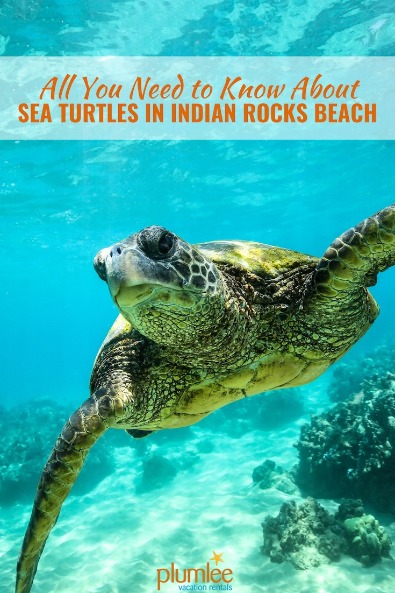
HAVE YOU SEEN ANY SEA TURTLES, nests or hatchlings DURING YOUR INDIAN ROCKS BEACH, FL VACAtion?
Tell us—or better yet—share a photo if you have it. We want to know when, where and what you saw.
